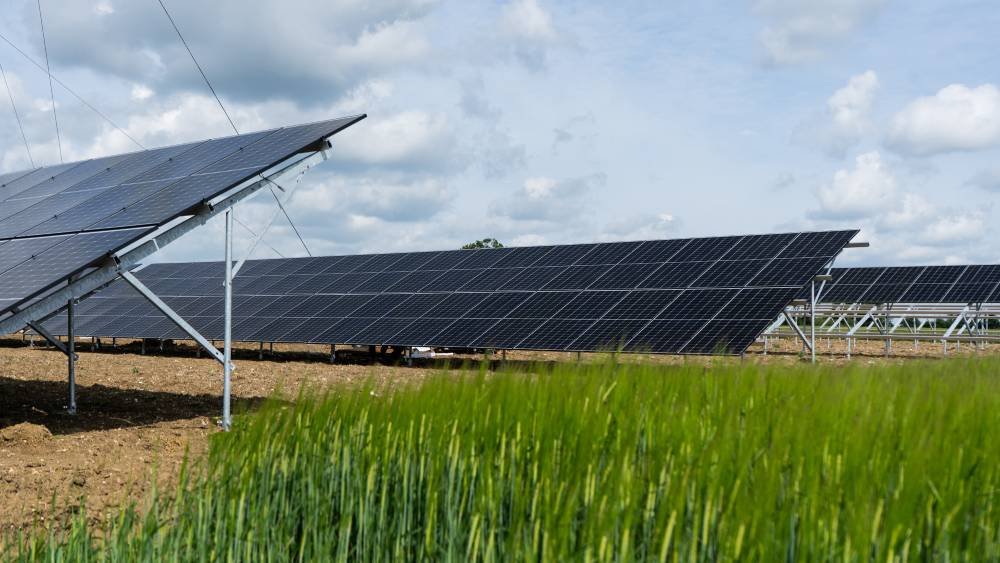Why Arable Farmers Are Turning to Solar PV in 2025
For arable farmers across the UK, the pressure to maintain margins while managing rising input costs has never been greater. With energy prices remaining unpredictable and environmental targets becoming tighter, many forward-thinking growers are now looking upwards — to their rooftops — for a smart, sustainable solution. Solar PV offers arable farms a way to cut costs, generate clean energy, and future-proof their businesses. Here’s why investing in solar in 2025 could be one of the best decisions an arable farmer can make.
1. Reduce Your Exposure to Rising Energy Prices
While arable farming may not always require as much electricity as intensive livestock operations, energy still plays a vital role — from grain drying and irrigation systems to workshops, offices, and cold storage. Installing solar panels allows you to produce your own electricity during daylight hours, directly reducing your reliance on the National Grid. With wholesale energy prices subject to global volatility, solar gives you a reliable, predictable energy source you can control.
2. Make the Most of Existing Roof Space
Most arable farms have excellent real estate for solar panels — large, unobstructed roof space on grain stores, machinery sheds, workshops, and barns. These structures often go unused for energy generation but are perfect for hosting a rooftop solar PV system. With minimal visual impact and no need to sacrifice valuable arable land, solar is a low-risk investment that can be installed with minimal disruption.
3. Improve Profitability with Long-Term Savings
Solar PV offers attractive financial returns over the system’s lifespan. A typical 100kW system, well-suited to a medium to large arable farm, can generate over 90,000 kWh annually — potentially saving £15,000–£20,000 per year, depending on usage and tariff. Most systems pay for themselves in 3–5 years and will continue to generate free electricity for decades. The more energy you use during daylight hours (for grain drying, for example), the quicker the return.
4. Strengthen Environmental Credentials and Meet Sustainability Targets
The agricultural sector is under growing pressure to reduce carbon emissions, with major supply chains and food retailers expecting their suppliers to prove sustainability credentials. By switching to solar, arable farmers can significantly reduce their farm’s carbon footprint and demonstrate real action on climate change. For farms aiming to improve their environmental performance under the Sustainable Farming Incentive (SFI) or access new supply contracts, solar can provide a clear competitive edge.
5. Benefit from Available Tax Relief and Funding Options
Solar PV installations can often be written off against tax using the Annual Investment Allowance (AIA), making the investment even more attractive. Additionally, there may be local or national grant schemes to support renewable energy projects on farms — especially those aligned with wider environmental goals. At East Green Energy, we can help you identify and apply for funding where available.
6. Increase the Value of Your Farm Infrastructure
Solar installations aren’t just about energy savings — they also add long-term value to your farm buildings. A roof-mounted solar PV system is a physical asset with a working life of 25 years or more. For farms thinking about succession planning or increasing asset value, this kind of long-term improvement can be an appealing part of the picture.
7. Position Your Farm for the Future
From smart irrigation to electric machinery, the future of arable farming will increasingly rely on electricity. Installing solar now puts your farm ahead of the curve, with clean, on-site energy ready to power tomorrow’s equipment. Battery storage, EV charging, and energy monitoring tools are all easier to integrate when solar is already in place.
Thinking About Solar for Your Arable Farm?
East Green Energy specialises in designing and installing solar PV systems for UK farmers. We understand the unique challenges and opportunities of agricultural sites and will work with you to create a system that fits your buildings, usage patterns, and business goals. Whether you’re drying grain, running irrigation pumps, or simply keeping the lights on in the yard, solar can deliver serious savings while reducing your environmental impact.
Get in touch today for a free site assessment and see how much your arable farm could benefit from solar in 2025 and beyond.

